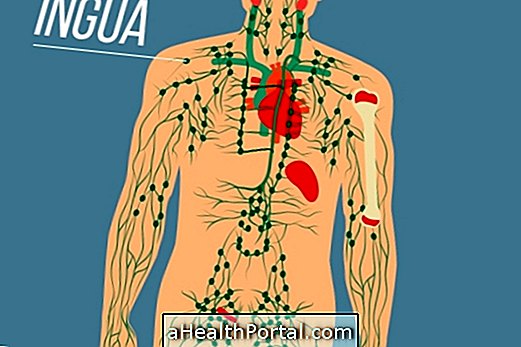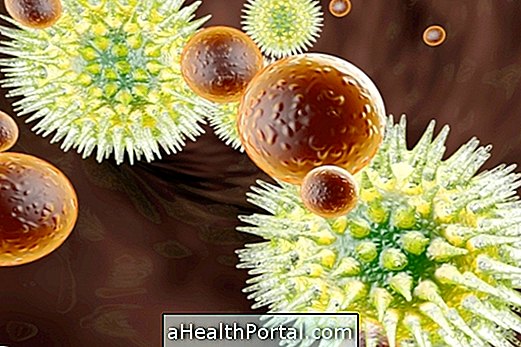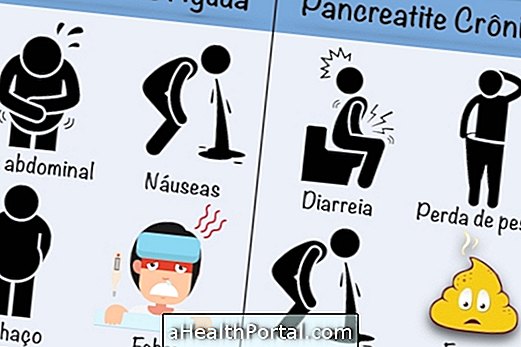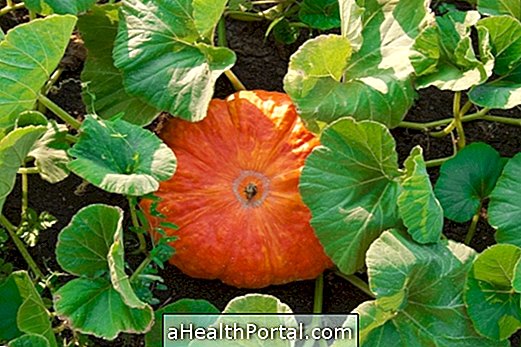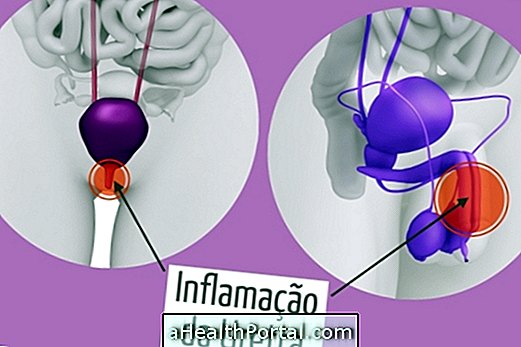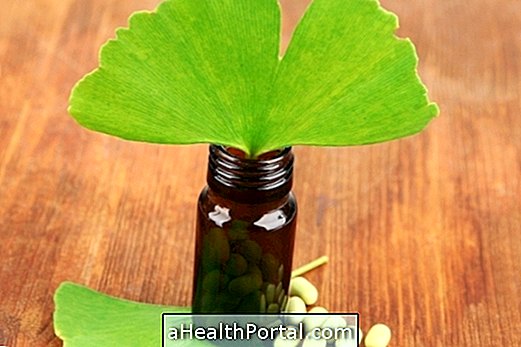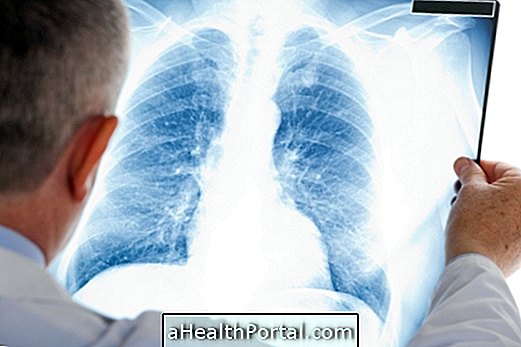The lining of the nose contains tiny blood vessels that are close to the surface and can be easily damaged. The most common causes of frequent and constant nosebleeds are nose and air quality, which if dry, nasal membranes become more susceptible to bleeding and becoming infected. To avoid bleeding, one can resort to nasal moisturizers and avoid putting the finger inside the nose.
In addition to these factors, there are other causes and diseases that may be the source of nasal bleeding and if correctly diagnosed, can be easily treated, correcting the problem of bleeding.
1. Trauma

If a nose injury occurs, such as a very hard blow or even if the nose breaks, this usually causes bleeding. The fracture occurs when there is a break in the bone or cartilage of the nose and, in addition to bleeding, symptoms such as pain and swelling of the nose, appearance of purple spots around the area, tenderness of the nose, and difficulty to breathe through the nose. Here's how to tell if your nose is broken.
What to do
Treatment usually consists of relieving symptoms with analgesics and anti-inflammatories, and then undergoing bone realignment surgery. The recovery usually takes about 7 days, but in some cases, other surgeries may need to be done by the otorhinolaryngologist or plastic surgeon for total nose correction. Learn more about broken nose treatment.
2. High Blood Pressure

Generally, people who have high blood pressure do not have symptoms unless the pressure is greater than 140/90 mmHg. In such cases, symptoms such as dizziness and dizziness, severe headache, bleeding from the nose, ringing in the ears, difficulty breathing, excessive tiredness, blurred vision and chest pain may occur. Know other symptoms and know the causes of hypertension.
What to do
The best thing to do if the person discovers that he has high blood pressure through a simple measurement, is to go to the doctor, who can only advise a more adequate diet, low in salt and fats, or in more severe cases can prescribe medicines that help to lower the blood pressure. If hypertension occurs during pregnancy, treatment should be rigorous, due to the risks it may have on the baby. Learn about treatment for high blood pressure in pregnancy.
3. Presence of foreign body in nose

At times, infants and children may insert objects into the nose, such as small toys, bits of food or dirt, for example, which can cause nosebleeds and difficulty breathing.
What to do
One might try asking the child to gently blow the nose or try to remove the object with a forceps, for example, but very carefully, as this process can make the object even more stuck in the nose. If none of these tips work out, you should go to the emergency room, so that a health professional can remove the object safely. However, one should calm the child and ask him to breathe through the mouth, in order to prevent the object from further into the nose.
It is still very important to avoid having small objects within reach of infants and children and always be an adult to watch, especially during meals.
4. Low platelets

People who have low platelets have a greater tendency to bleed because they have a greater difficulty in blood clotting and therefore may present with symptoms such as purple and red spots on the skin, bleeding gums and nose, blood in the urine, bleeding in the stool, bulging menstruation and bleeding wounds of difficult control. Learn about the main causes of this disease.
What to do
The treatment of low platelets should be done according to their cause by the general practitioner or hematologist, and it may be necessary only the control of the cause, the use of medicines or, in very serious cases, the transfusion of platelets. See more about treatment.
5. Deviation of the nasal septum

Deviation of the nasal septum may occur due to trauma to the nose, local inflammation, or just a birth defect, resulting in decreased size of one nostril, which may cause difficulty in breathing, sinusitis, tiredness, nasal bleeding, difficulty sleeping and snoring. Learn about other symptoms that can occur in these cases.
What to do
The treatment usually consists of performing a simple surgery, which lasts for about one hour and recovery takes place in a week.
6. Hemophilia

Hemophilia is a genetic and hereditary disease that causes changes in blood clotting and may cause symptoms such as purple spots on the skin, swelling and pain in the joints, spontaneous bleeding in the gums or nose, bleeding that is difficult to stop after a simple cut or surgery and excessive and prolonged menstruation. Learn more about this disease.
What to do
Although hemophilia can not be cured, hemophilia can be treated by replacing coagulation factors that are lacking in the person, such as factor VIII in the case of type A hemophilia and factor IX in the case of type B hemophilia. about the treatment of hemophilia and what care it should take.
7. Sinusitis

Sinusitis is an inflammation of the sinuses that can cause symptoms such as nosebleed, headache, runny nose and a feeling of heaviness on the face, especially on the forehead and cheekbones. Generally, sinusitis is caused by the virus Influenza, being very common during flu attacks, but also can be caused by the development of bacteria in the nasal secretions, that remain trapped inside the nasal sinuses.
What to do
Sinusitis is cured and its treatment must be performed by a general practitioner or otolaryngologist and usually consists of the use of nasal sprays, analgesics, oral corticosteroids or antibiotics, for example. Learn more about treatment.
8. Use of medicines

Using medications such as nasal sprays that treat allergies, anticoagulants such as warfarin or heparin, or medicines such as aspirin may make it difficult for blood to clot and cause bleeding more easily, such as in the nose.
What to do
If bleeding from the nose causes too much discomfort or is very frequent, it is best to talk to the doctor in order to measure the benefits and richness of the medicine in question, and if necessary, make a substitution.


